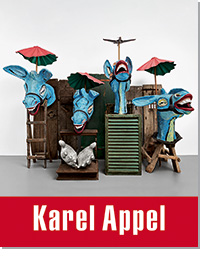Künstlerbücher / Special Editions
Almond, Darren / Blechen, Carl: Landschaften
Brown, Glenn: And Thus We Existed
Butzer, André: Exhibitions Galerie Max Hetzler 2003–2022
Chinese Painting from No Name to Abstraction: Collection Ralf Laier
Choi, Cody: Mr. Hard Mix Master. Noblesse Hybridige
Demester, Jérémy: Fire Walk With Me
Dienst, Rolf-Gunter: Frühe Bilder und Gouachen
Dupuy-Spencer, Celeste: Fire But the Clouds Never Hung So Low Before
Ecker, Bogomir: Man ist nie Alone
Elmgreen and Dragset: After Dark
Förg, Günther: Forty Drawings 1993
Förg, Günther: Werke in der Sammlung Friedrichs
Galerie Max Hetzler: Remember Everything
Galerie Max Hetzler: 1994–2003
Gréaud, Loris: Ladi Rogeurs Sir Loudrage Glorius Read
Grosse, Katharina: Spectrum without Traces
Hatoum, Mona (Kunstmuseum
St. Gallen)
Eric Hattan Works. Werke Œuvres 1979–2015
Hattan, Eric: Niemand ist mehr da
Herrera, Arturo: Boy and Dwarf
Hilliard, John: Accident and Design
Horn, Rebecca / Hayden Chisholm: Music for Rebecca Horn's installations
Huang Rui: Actual Space, Virtual Space
Kowski, Uwe: Gemälde und Aquarelle
Mikhailov, Boris: Temptation of Life
Mosebach, Martin / Rebecca Horn: Das Lamm
Neto, Ernesto: From Sebastian to Olivia
Oehlen, Albert: Spiegelbilder. Mirror Paintings 1982–1990
Oehlen, Albert: unverständliche braune Bilder
Oehlen, Pendleton, Pope.L, Sillman
Oehlen, Albert | Schnabel, Julian
Phillips, Richard: Early Works on Paper
Riley, Bridget: Gemälde und andere Arbeiten 1983–2010
Riley, Bridget: Die Streifenbilder 1961–2012
Riley, Bridget: Paintings 1984–2020
True Stories: A Show Related to an Era – The Eighties
Wang, Jiajia: Elegant, Circular, Timeless
Wool, Christopher: Westtexaspsychosculpture
Zhang Wei / Wang Luyan: Ein Gespräch mit Jia Wei
 |
|
|||
| Karel Appel Text Franz W. Kaiser Englisch / Deutsch |
„Der Mensch ist der kreative Raum inmitten der Komplexität des Unendlichen. Das ist das Positive, von dem ich nun ausgehend weiterarbeiten werde, besser gesagt, auf der Basis dieser Idee, die nicht vernünftig oder intellektuell ist, sonst würde ich mich selbst zum Gefangenen machen.“ —Karel Appel
Als Gründungsmitglied der CoBrA-Gruppe gehörte Karel Appel einer der wichtigsten europäischen Nachkriegs-Avantgarden an, als Maler der Nouvelle École de Paris feierte er in den 1950er-Jahren erste Erfolge. Zwischen New York und Paris pendelnd, suchte er zeitlebens die künstlerische Konfrontation mit dem Unbekannten: ein ungewohnter Stil, ein besonderes Motiv, der Wechsel zwischen Skulptur und Malerei. Das Buch dokumentiert vier Ausstellungen, die in den Galerien Max Hetzler Berlin und London zwischen 2019 und 2023 zu sehen waren. Die jüngsten beiden zeigten den Einfluss von Appels erstem Besuch in New York: Hier fand er einerseits zur Aktionsmalerei, als deren Höhepunkt sein wandfüllendes, über Nacht vor Ort gemaltes Bild für die Documenta 1964 vertreten ist, andererseits nahm er das akademische Sujet der Aktmalerei auf ganz und gar unakademische Weise auf. In der Mitte des Buchs steht eine retrospektive Auswahl des dreidimensionalen Werks von Bronze- und Terracotta-Arbeiten über Objektmalereien bis zu absurd-poetischen Assemblagen karnevalistischer Fundstücke. Zuletzt kehrte Appel in großformatigen Zeichnungen und expressionistischen Gemälden der 1980er- und ’90er-Jahre zum Akt-Thema zurück. So folgt das Buch unterschiedlichen Linien mit vielen Verzweigungen durch ein Œuvre von sechzig Jahren, in dem es noch viel zu entdecken gibt.
PARIS/NEW YORK From the 1970s onwards Appel had his own studio in New York, but he never sought American citizenship since he identified as a European artist. In New York he met jazz musicians such as Dizzy Gillespie, Sarah Vaughan, Count Basie, and Miles Davis, whom he painted, as well as fellow artists from the New York School—especially Willem de Kooning and Franz Kline. Soon after his return to Paris, Appel realized Rencontre au printemps (1958), a monumental painting commissioned by UNESCO to decorate its new headquarters, which opened in Paris in 1959 (see also the following chapter). The immense dimensions of this painting correspond to works from the New York School rather than to their European counterparts, and it is stylistically reminiscent of action painting. It is the first painting of what is probably the most abstract phase in Appel’s oeuvre, represented in the London exhibition by two examples, Bataille d’animaux from 1958 and Paysage humain from 1959. In 1961, the Dutch journalist and filmmaker Jan Vrijman made the film The Reality of Karel Appel, which shows the artist as an action painter, comparable to Hans Namuth’s depiction of Jackson Pollock in a film made ten years earlier. Appel’s documenta painting of 1964 epitomises this type of work and the story of its creation is the stuff of legends: In 1954, Appel was invited both to the Venice Biennale, which announced the end of Paris’ status as art capital, and to documenta III. Since the pictures selected for the Kassel exhibition were not released by customs in time, Appel, on the eve of the opening, had four chipboards mounted on the wall reserved for him and ordered paint. He created the painting measuring 2.7 x 6.8 metres in one night. This work was exhibited by Galerie Max Hetzler for the first time since then, more than half a century later. While one part of the exhibition was devoted to action painting, another section presented a concise overview of the other theme that Appel brought back from New York, which might surprise in this context: paintings of nudes. This historically academic subject seems to contradict both abstract action painting and Appel’s earlier Cobra works, which were often inspired by children’s drawings and outsider art in stark contrast with academic ideals. Although Appel had drawn nudes during his studies at the Rijksakademie in Amsterdam, and there is a nude from 1953 painted entirely in the Cobra style, the nude did not develop into a full series until 1957. One can assume this was inspired by his meeting with Willem de Kooning, who, like Appel, worked between abstraction and figuration and was already famous for his female nudes …
... |